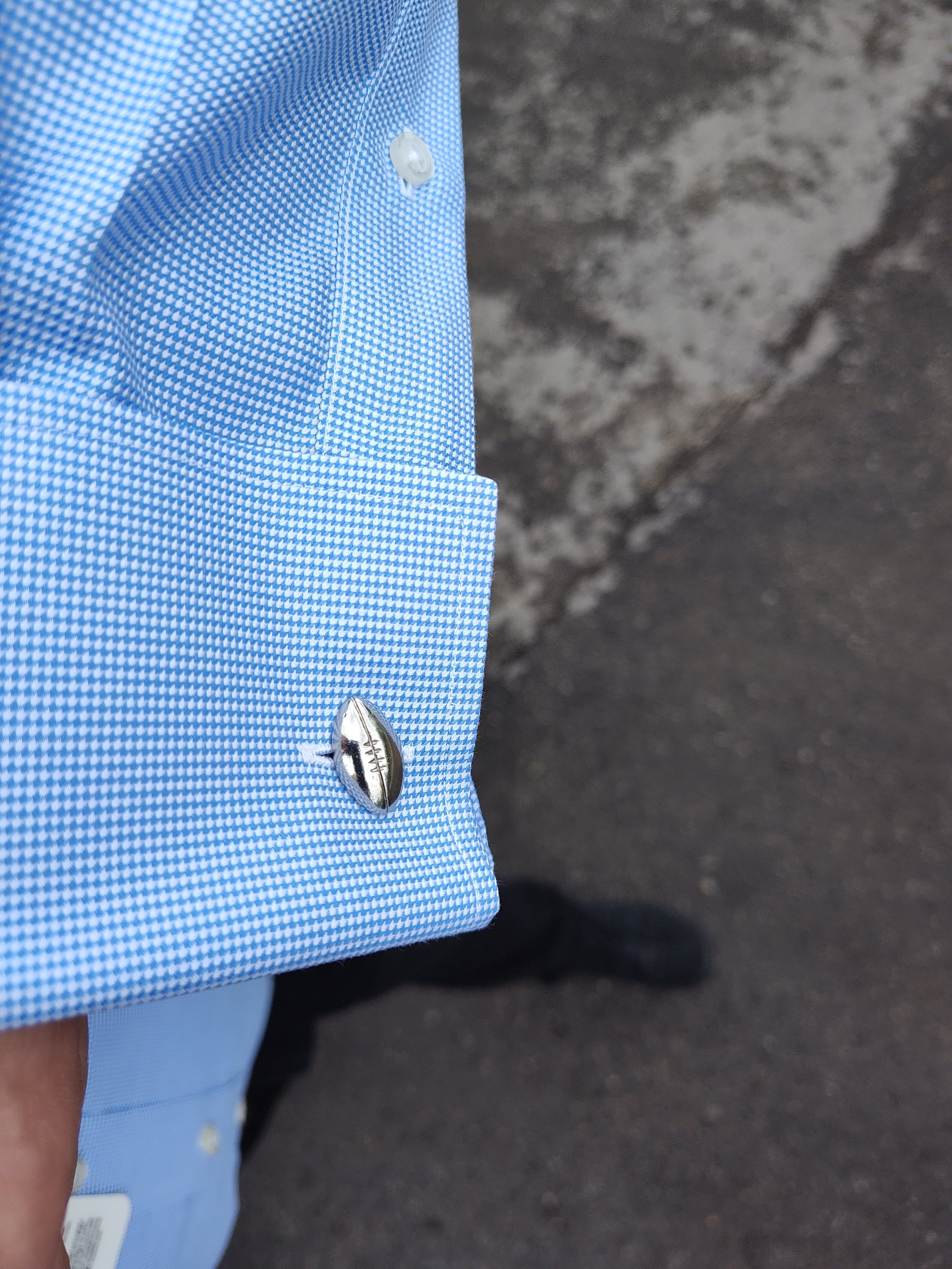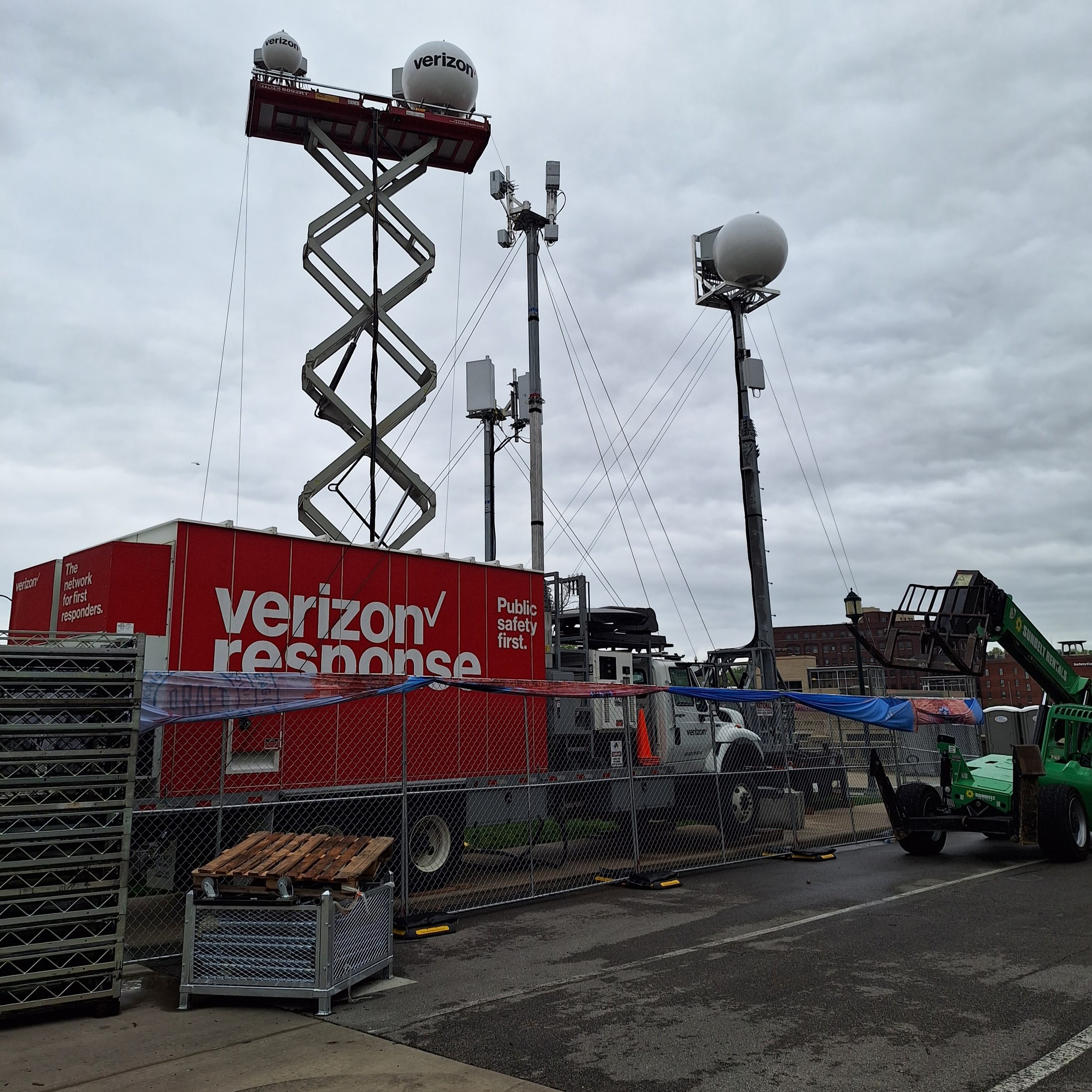Verizon Prepares for the NFL Draft (And Anything Else That Might Hit the Midwest)
The NFL Draft starts tomorrow. I am a football fan, so I'm well acquainted with the frenzy surrounding the league, but even I would not have predicted that Kansas City is expecting THREE HUNDRED THOUSAND people to attend the draft this year. It's part sports event when college players are upgraded to the pros, part free music festival (Fall Out Boy, Mötley Crüe, and Thundercat are all playing), and mostly a kind of religious revival. People take their football seriously enough to fly halfway across the country to commune with like-minded fans, drink beer, listen to music, and argue vociferously about the merits of their team choosing or rejecting college kids they had never heard of a few months ago.
Verizon invited media to Kansas City last week to show off what goes into preparing for an event of this magnitude, and also took the opportunity to brief us on the tools, strategies, and personnel involved in providing emergency service response in general. This is an aspect of the industry that is usually hidden, so I took the opportunity to learn how operators set up for planned stresses on their networks — and what Verizon does to respond to unplanned emergencies.
Preparing for the NFL Draft
All the wireless carriers like to talk about how they have improved their 5G networks, but an outdoor event like the NFL Draft will overwhelm the normal infrastructure. Hundreds of thousands of people will need wireless network access to post selfies proving they were there, make foolish online parlay bets, and figure out a map route to get home. First responders will also need constant communication to ensure public safety. The wireless providers are all onsite in Kansas City beefing up their networks, and the most visible is Verizon because, as duly noted in its press release, Verizon is the official 5G network of the NFL. When I say Verizon was the most visible, I mean that literally: while the carrier genuinely appeared to have the most assets all around the event, AT&T and T-Mobile also had mobile 4G and 5G towers, but without visible logos. The NFL takes its licensing deals seriously.
I got a chance to go inside one of the COWs (Cell on Wheels) and gawk at the networking racks inside. The NFL Draft venue is in a park and memorial in downtown Kansas City, and the temporary cell towers like COWs and COLTs (Cell on Light Trucks) we saw deployed could easily plug into local fiber for backhaul. In fact, if you know where to look, you can see the tiny fiber cable that carries all the voice and data traffic from the antennas in the COWs and COLTs routed to their endpoints underground or inside buildings. However, when a tornado takes out a cell tower or first responders request communication for a mobile command center in the middle of nowhere, there isn’t typically a fiber drop to connect to. Instead, Verizon uses microwave or satellite for backhaul, and this took us to the second part of our Kansas City wireless preparedness tour: The Cave.
The Cave
When we got to the cave, we saw THOR (Tactical Humanitarian Operations Response), Verizon’s celebrated experimental command center/network on wheels, parked outside. THOR has been used to set up temporary networks in disaster areas, help the U.S. government manage emergency logistics, and starred in an episode of Lone Star 911. However, The Cave is not another acronym, it’s an actual cave, a facility built 65 feet underground in a mountain. After a providing temporary network assistance for a devastating tornado a few years ago, Verizon’s Frontline manager for part of the Midwest recognized the importance of keeping emergency response assets outside the reach of future weather events. Inside The Cave, Verizon’s Frontline responders, logistics personnel, and engineers store COWs, COLTs, spare generators, collapsible cell tower masts, parts, drones, robot dogs, and SPOTs (Satellite Picocell on a Trailer).
The robot dog lacks a proper acronym (SPOT is taken), but it can be used to extend connectivity to wider areas in situations – such as hazardous materials spills and wildfires – where it is dangerous for first responders to go. I got a chance to play with the dog; it was a very good robot. We did not get a chance to see the drones, but they have been used to create flying cell towers in areas where there was no coverage due to hurricane damage. Perhaps most impressive were the Frontline network engineers who drop what they’re doing to provide service – seemingly always on Friday nights, they joked – and can get a SPOT set under thirty minutes from arriving at a site.
The Verizon Frontline Crisis Response Team doesn’t charge local, state, or federal agencies for support, but this is a regulated industry, and its assistance does not go unnoticed. Verizon is also not the only provider with public safety networks that works with first responders, which explains why it wanted to ensure its story gets out to the media. Business and marketing aside, I was impressed.




























